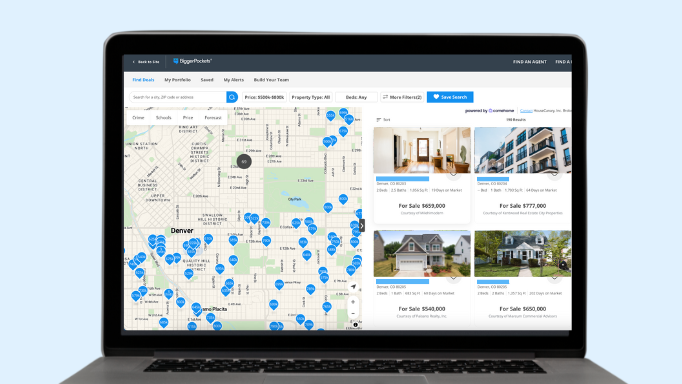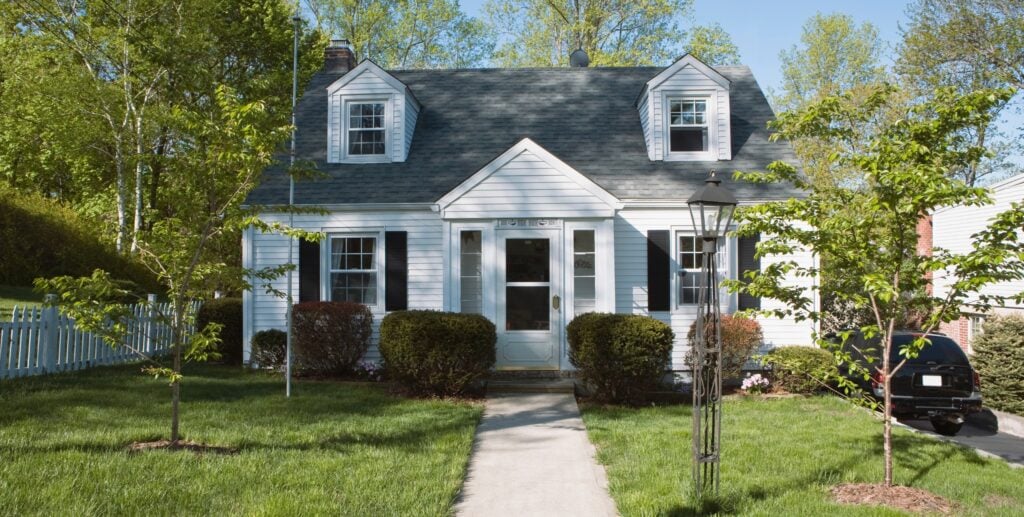[ad_1]
With median home prices over $430,000 and interest rates hovering around 6%, the concept of BRRRRing your way to financial freedom seems like a real estate strategy from a bygone era.
The BRRRR strategy (buy, rehab, rent, refinance, repeat) is based on finding discounted properties, fixing them up, renting them out, refinancing, and socking away the cash flow with a long-term tenant, and repeating the process until you have amassed a sizable monthly cash flow. In 2024, I largely believe that it’s unrealistic to achieve.
Assuming you can find a discounted home, fix it up using hard money, and get market rent, the issue comes when you have to refinance it, strip the home of its equity, and take on more debt to repeat the process. Now, you are on the hook for the extra loan.
How much cash flow are you really making? Assuming you want to follow the 1% rule, you would have to charge your tenants over $4,000/month in rent if you purchased your rental below the median market value, adding debt to bring it to the median price when you rehabbed and refinanced. This is not feasible in most markets because the average national U.S. rent is $1,840.
Low-Cash-Flowing Properties Are Not Worth It
For argument’s sake, let’s assume you have found an investment that meets all the BRRRR criteria and cash flows $300/month after all expenses. It’s time to break the fallacy that you can BRRRR your way to financial freedom by amassing $300 cash-flowing rentals.
First, in the current market, to find a property that cash flows by $300 and does not cost a fortune, you would have to be in a C or C+ neighborhood—or worse. Having owned many such properties and clocked in more landlord/tenant court hours than some judges, I can attest that the numbers on paper never work out. Repairs and nonpayment of rent/evictions wipe out any perceived cash flow and leave most landlords deeply in the red. Even if you have scaled a few properties generating $300/month in cash flow, one costly repair or eviction could crash your real estate house of cards.
Buying in better neighborhoods costs more money. Are you really going to spend well over half a million dollars to break even, or cash flow $300-$500/month? You would need to be financially free to make such a move and look for a place to park cash or enjoy depreciation while gaining appreciation. Cash flow would not be your primary goal.
Alternative Strategies
Before you throw your hands up in the air in despair, wondering if owning rental real estate is even possible or worth it today, don’t fret. Making money from rentals is still possible, but the BRRRR method using a yearly lease is not the way. You need to be creative. Here are a few alternatives to consider.
Short-term/medium-term/vacation rentals
To cash flow, you need to increase rents. Assuming you cannot convert attics or basements to extra bedrooms, the easiest solution is not to rent your apartment/house on a standard yearly lease but instead convert it to a short-term/medium-term or vacation rental. Much of this depends on whether there is demand for this type of use in your area and whether you are prepared to undertake the additional management and costs this incurs or hire someone who is.
If you are in a seasonal location, when the rents for 12 months are collated, it might not be worth it. However, it could be a good move if you are in an in-demand college town or tourist area.
Buy a fixer-upper and do the renovation yourself
Sweat equity costs you nothing but time and materials. Assuming you have access to both, and you buy a property cheaply enough, you could circumvent a costly renovation and thus keep the equity in your investment. The end result is greater cash flow.
Rent by the room
The affordability crunch has made by-the-room rentals more popular in recent years. Whether you wish to call them workforce housing or co-living spaces, the concept of having roommates is not new. However, this type of rental can generate far more income than a standard whole-house rental, especially when each room is updated to feel luxurious like a hotel room.
Save money from your job and make large down payments
This might fly in the face of why many people want to invest in real estate, but the importance and benefits of a good-paying W2 job cannot be overstated. Your job is your first business partner and, as such, will help you scale much faster than risky leveraging, crossing your fingers, and hoping your tenants pay their rents on time.
If you are not in a position to borrow safely, don’t. Instead, focus on earning as much money as you can from your 9-to-5, limiting your expenses, and buying houses traditionally, never refinancing and stripping equity but ensuring your properties cash flow well by putting enough of a down payment each time.
Start by flipping houses to build up a sizable nest egg
Flipping houses is easier said than done. If you embark on this venture without a trusted team in place, it can amount to a full-time job. However, when done correctly, it can provide a big chunk of cash, which you can then deploy as a sizable down payment for rental property.
Invest in multifamily housing
If single-family real estate doesn’t cash flow, why should a multiunit be used? Economy of scale. A 20-unit rental, with each unit generating $300 in cash flow, will generate $6,000/month.
Of course, the multiunit will cost a lot more upfront than a single-family house. However, that can also be an advantage because, generally speaking, the competition is lower amongst buyers for multiunit properties. There is more opportunity to “buy right” (at a price that makes sense economically), especially if the building needs work. You can add value—thus increasing the rental income and asset value. There is also more scope to bring on partners, as there is more cash flow.
HUD offers programs that apply to small multifamily buildings in multifamily housing projects in urban renewal areas, code enforcement areas, and other areas where local governments have undertaken designated revitalization activities.
Other types of commercial buildings
Despite the drop in interest rates, commercial real estate will still face a tumultuous 2025, according to analysts. Particularly troubled is office space. Depending on your funding and investment ability, converting offices to housing is ripe for opportunity, with historic state and federal tax credits available for investors. Many states have also changed zoning laws to facilitate the process.
Final Thoughts
The BRRRR method using a yearly lease strategy had its time, but modern-day economics just don’t support it. It might become fashionable again should interest rates drop precipitously and housing prices and rents align. However, if investors attempt to BRRRR with less-expensive houses by marginal cash flow amounts in today’s market, they could be setting themselves up for financial ruin.
In the best of times, real estate investing is not for the fainthearted. There are many moving parts, each of which could derail you. This is exacerbated when adopting a highly leveraged investment strategy.
Be sensible. The risk and stress of investing a few hundred dollars in cash flow isn’t worth it. Just because banks might lend you money based on your credit score or the value of your asset doesn’t mean you should take it.
Find the Hottest Deals of 2024!
Uncover prime deals in today’s market with the brand new Deal Finder created just for investors like you! Snag great deals FAST with custom buy boxes, comprehensive property insights, and property projections.

Note By BiggerPockets: These are opinions written by the author and do not necessarily represent the opinions of BiggerPockets.
[ad_2]
Source link






 Bitcoin
Bitcoin  Tether
Tether  XRP
XRP  USDC
USDC  Lido Staked Ether
Lido Staked Ether  Dogecoin
Dogecoin  LEO Token
LEO Token